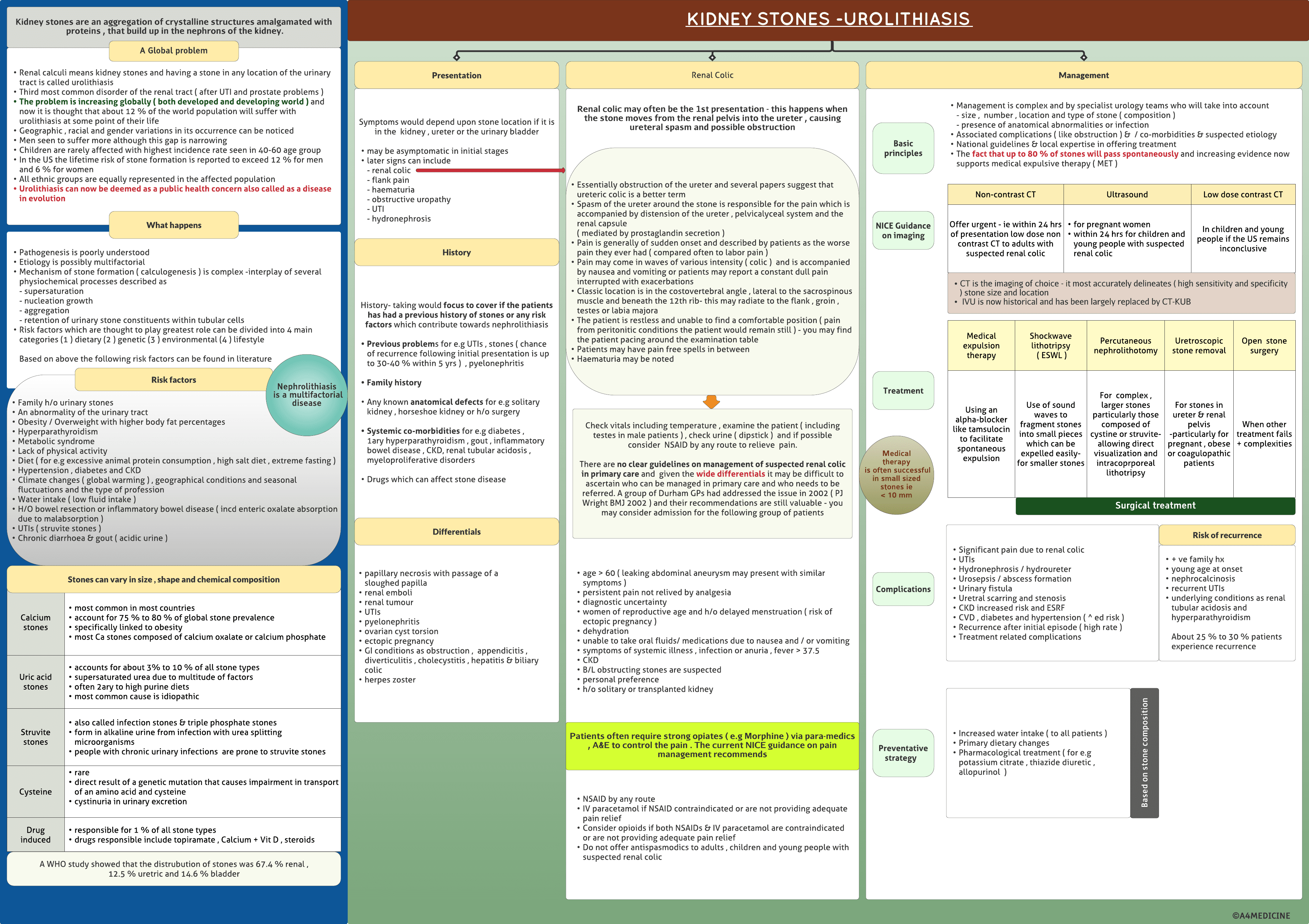Download A4Medicine Mobile App
Empower Your RCGP AKT Journey: Master the MCQs with Us!

Kidney stones are an aggregation of crystalline structures amalgamated with proteins , that build up in the nephrons of the kidney.
Renal calculi means kidney stones and having a stone in any location of the urinary tract is called urolthiasis Third most common disorder of the renal tract ( after UTI and prostate problems ) The problem is increasing globally ( both developed and developing world ) and now it is thought that about 12 % of the world population will suffer with urolithiasis at some point of their life Geographic , racial and gender variations in its occurrence can be noticed Men seen to suffer more although this gap is narrowing Children are rarely affected with highest incidence rate seen in 40-60 age group In the US the lifetime risk of stone formation is reported to exceed 12 % for men and 6 % for women All ethnic groups are equally represented in the affected population Urolithiasis can now be deemed as a public health concern also called as a disease in evolution
What happens - Pathogenesis is poorly understood Etiology is possibly multifactorial Mechanism of stone formation ( calculogenesis ) is complex -interplay of several physiochemical processes described...
Try our Free Plan to get the full article.